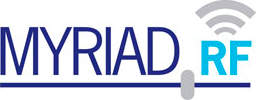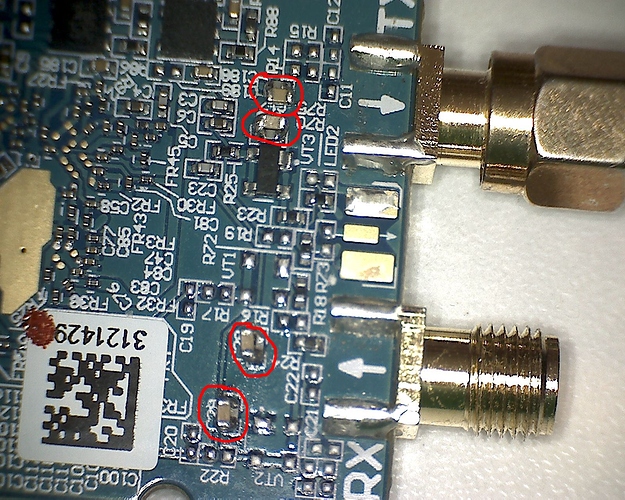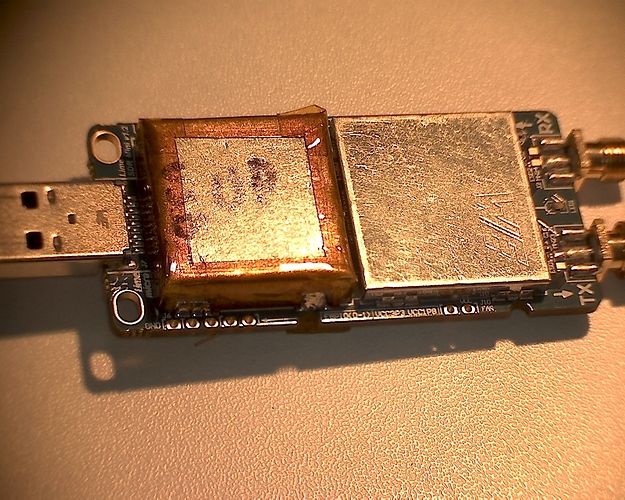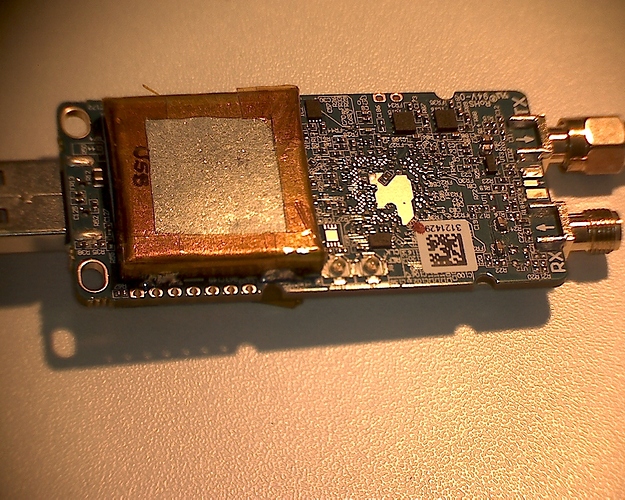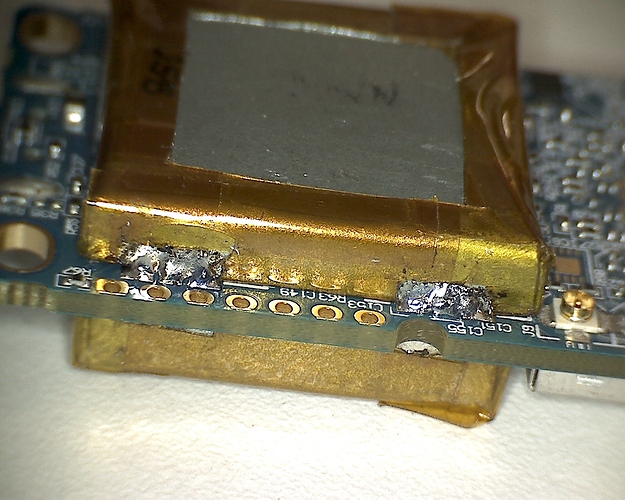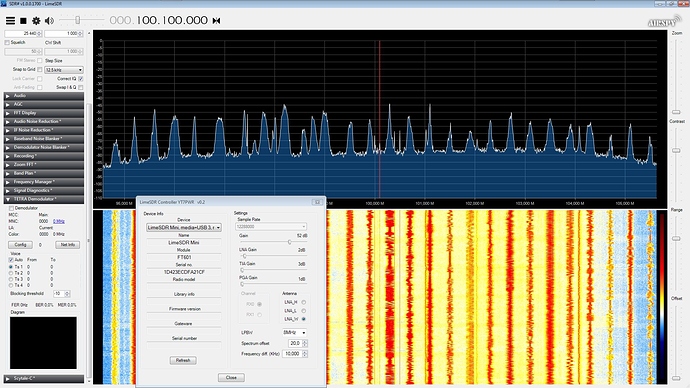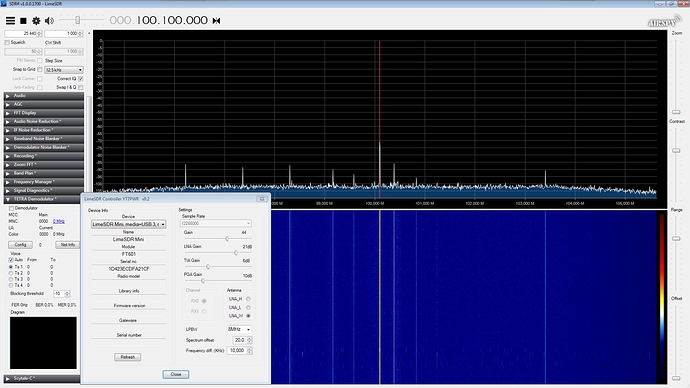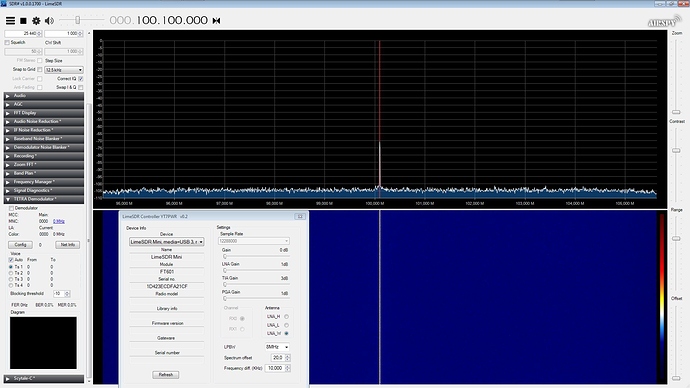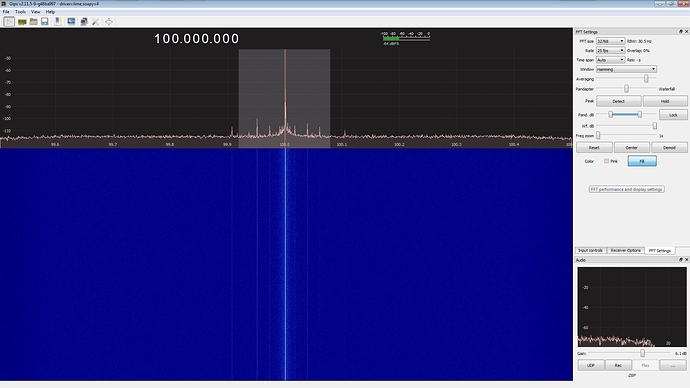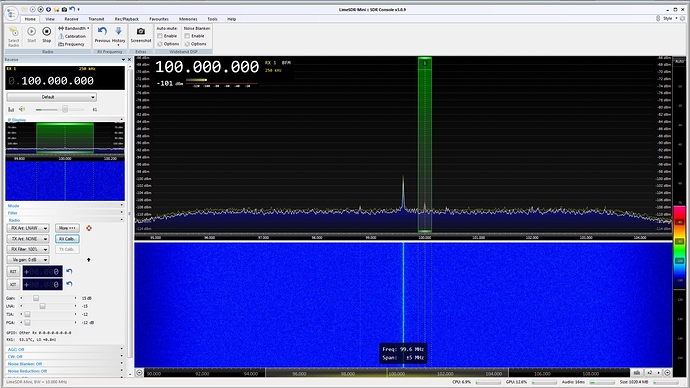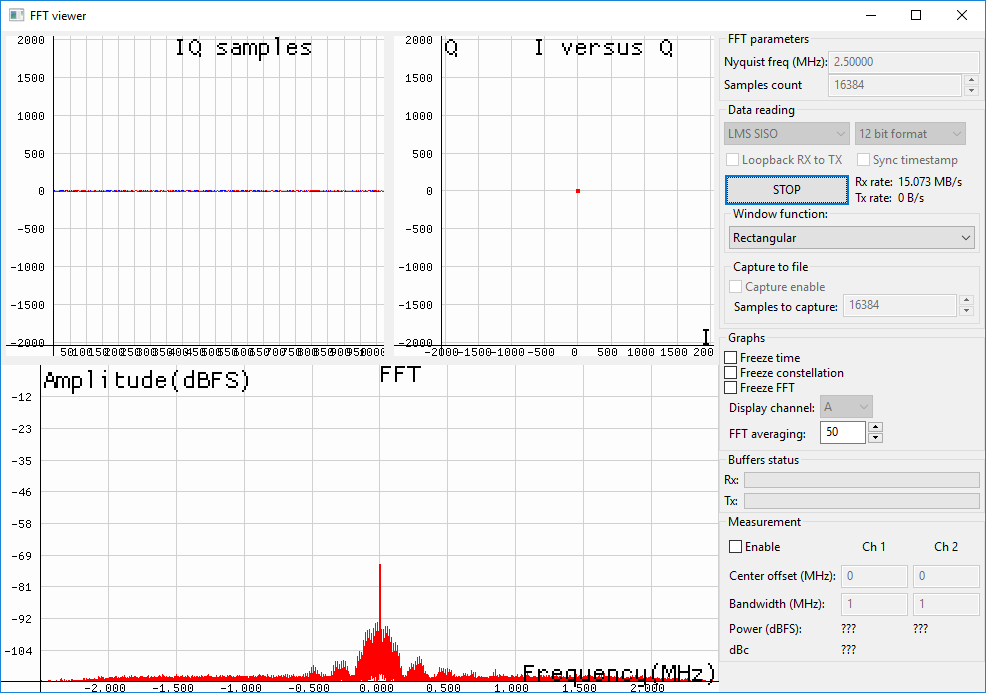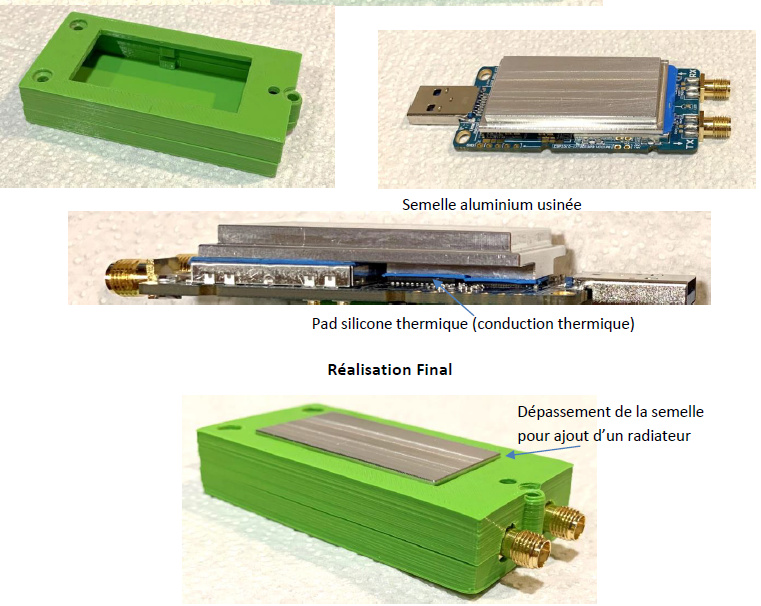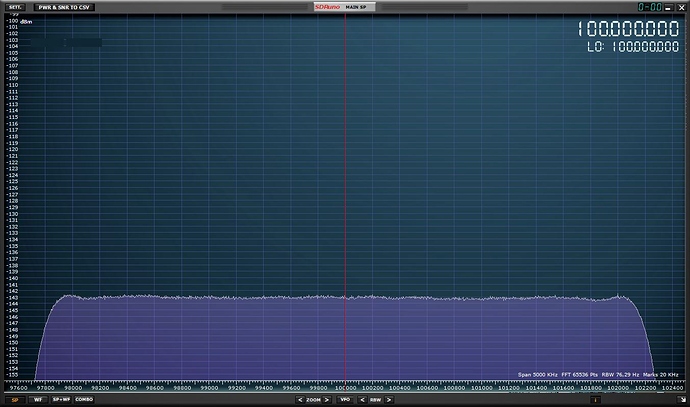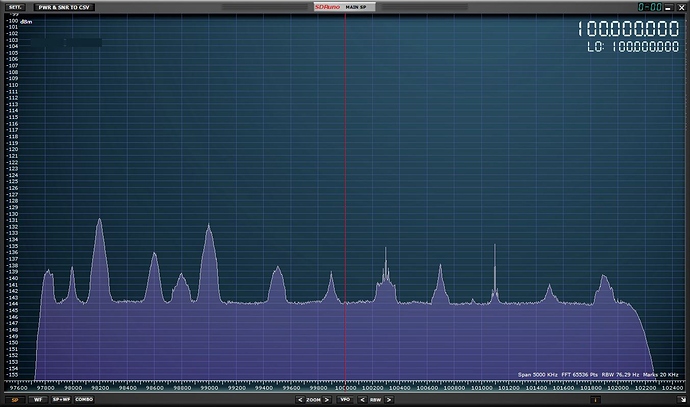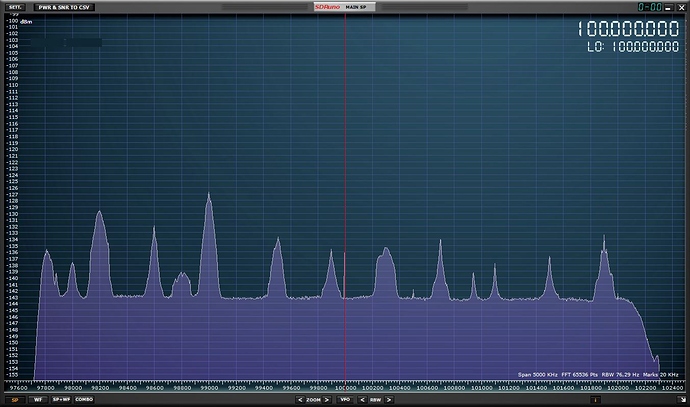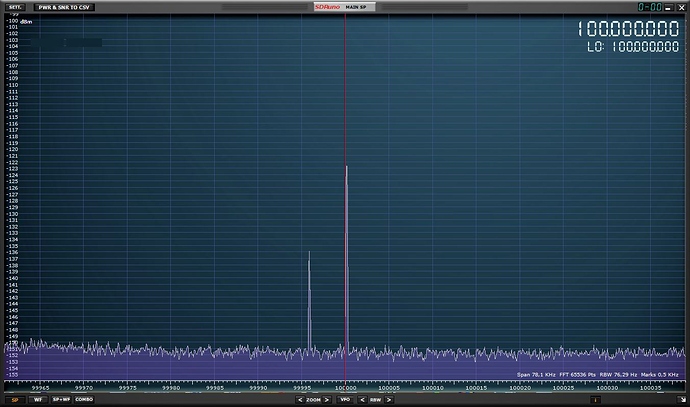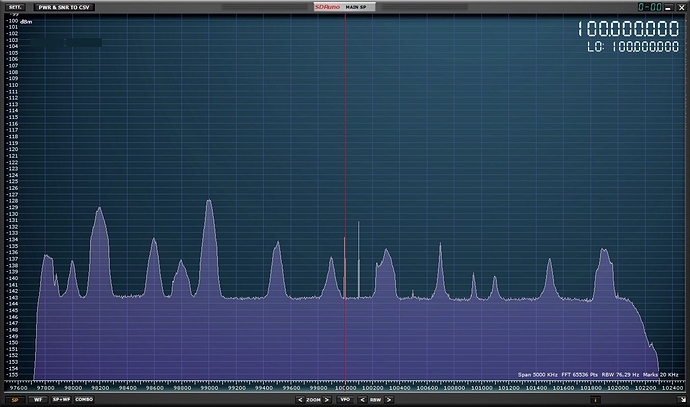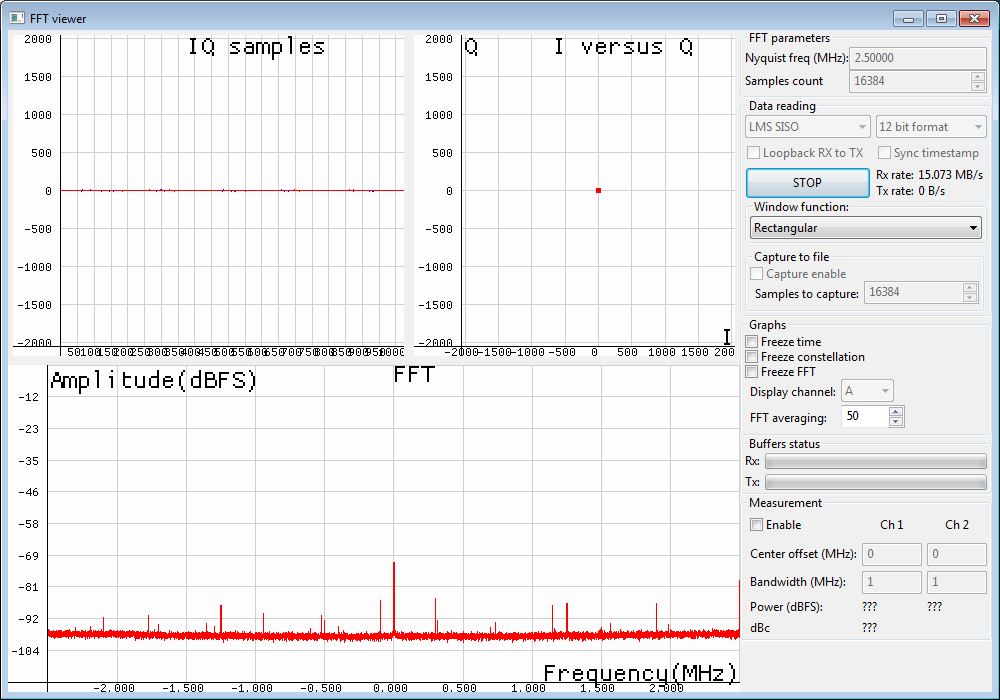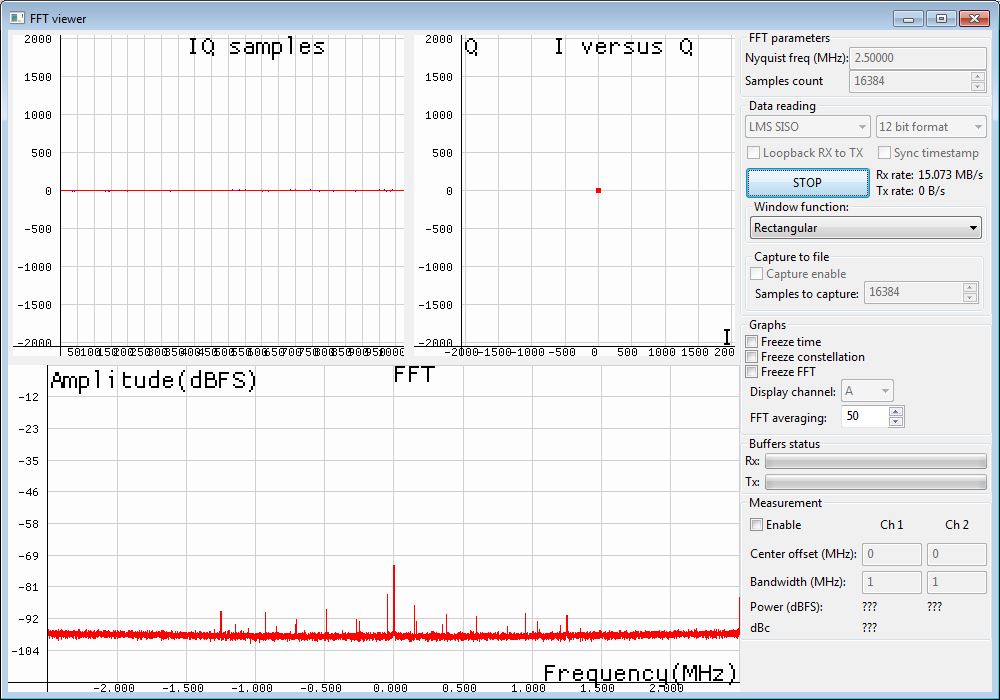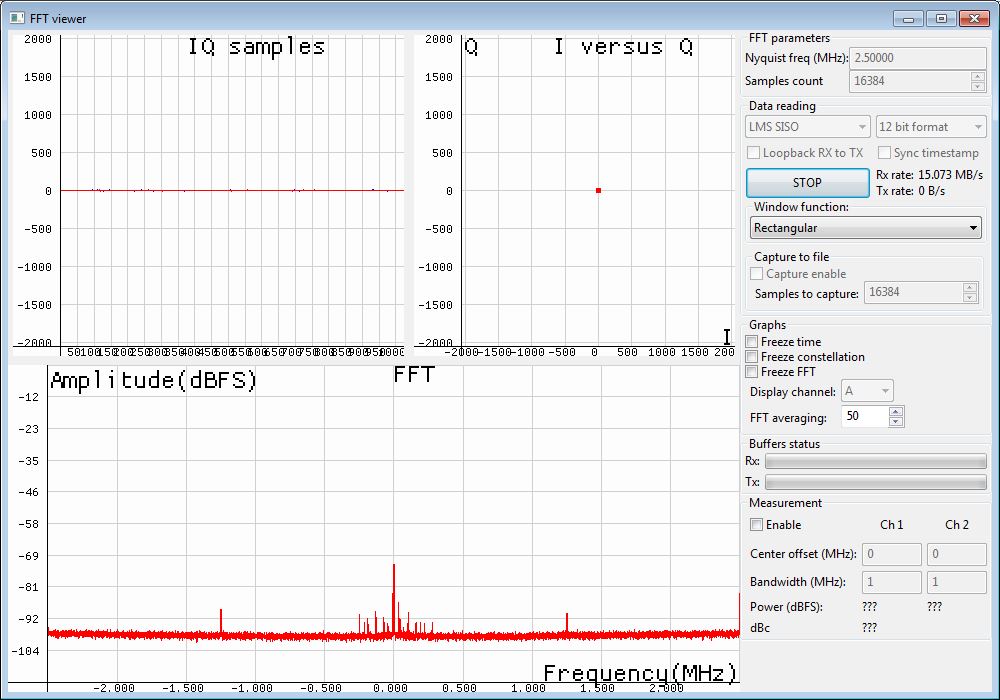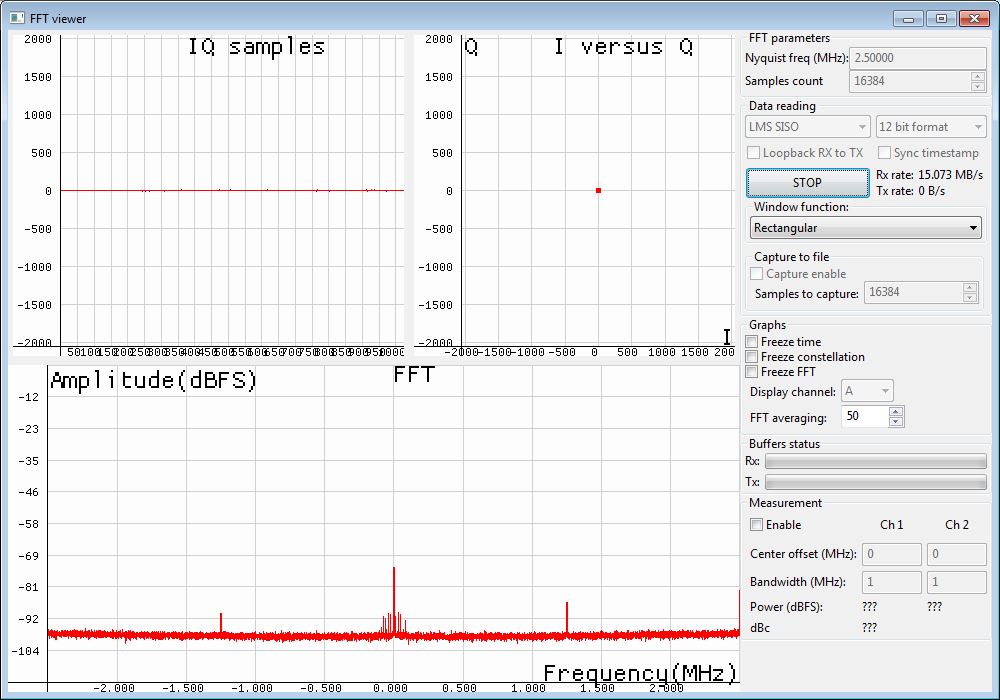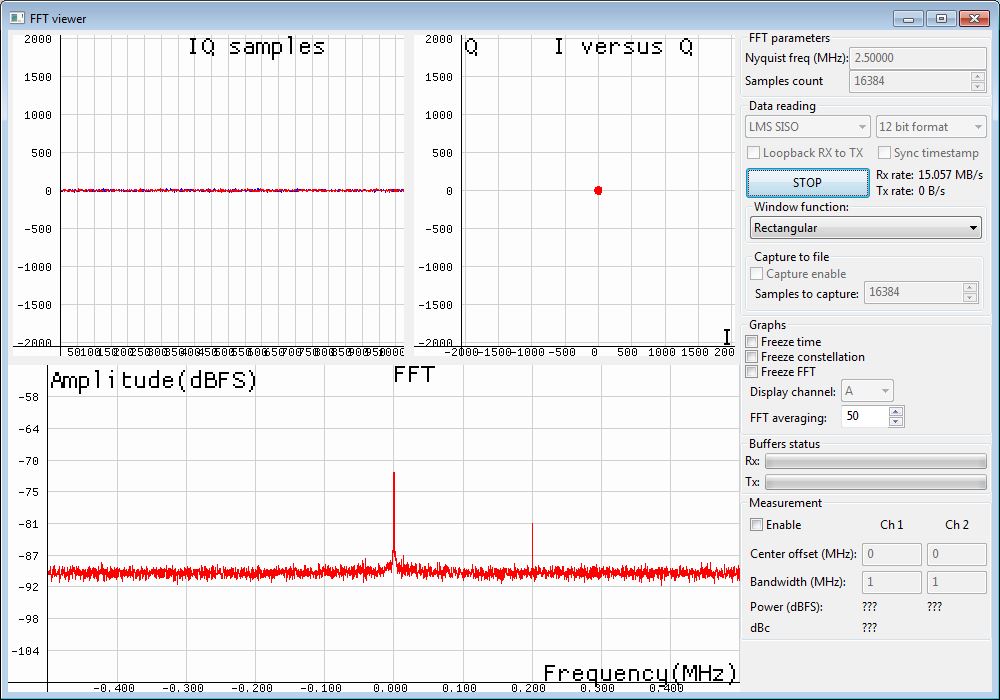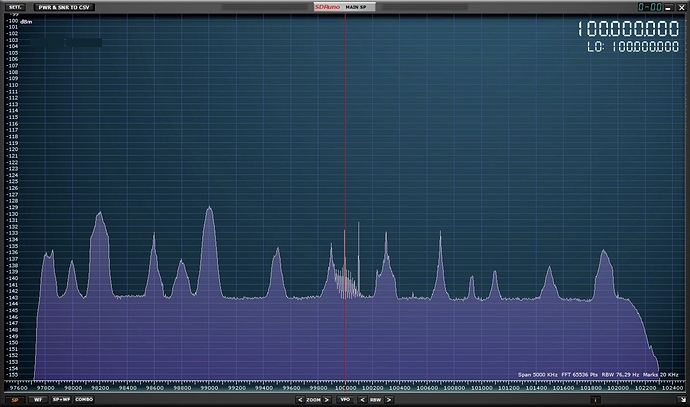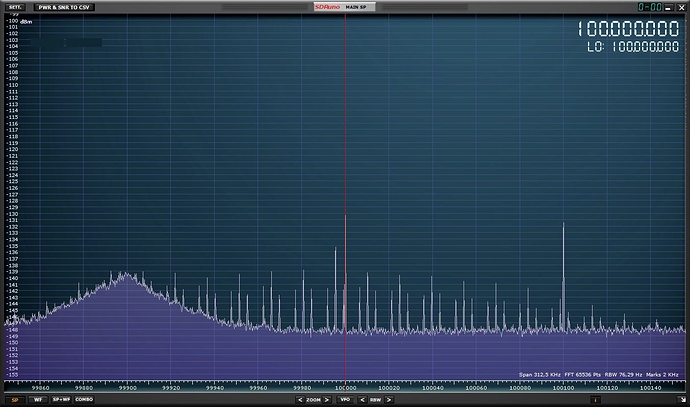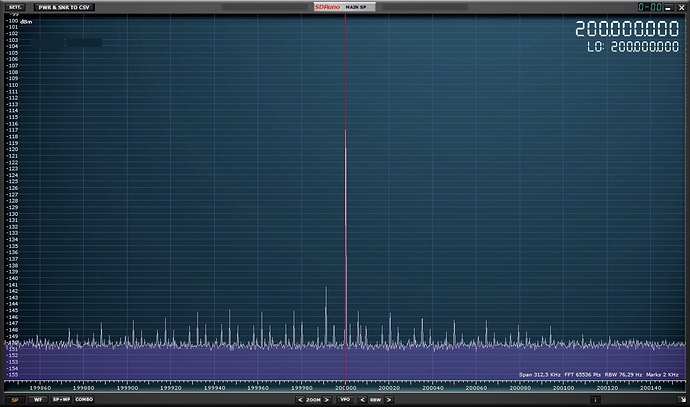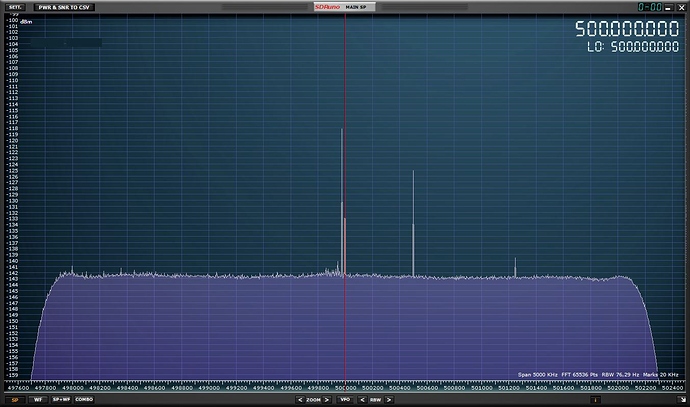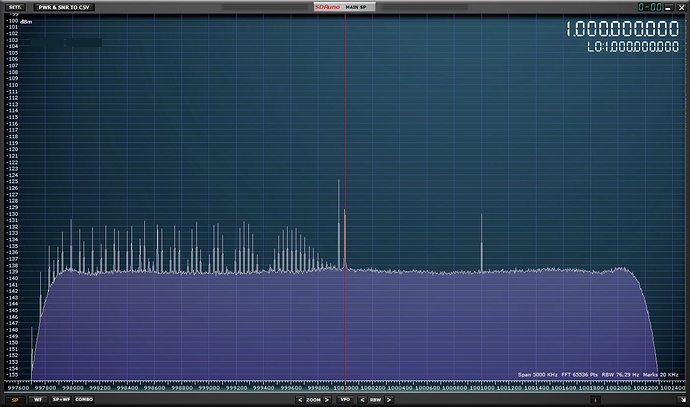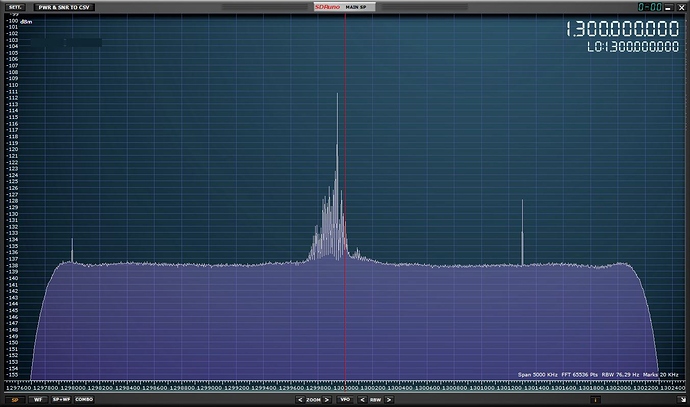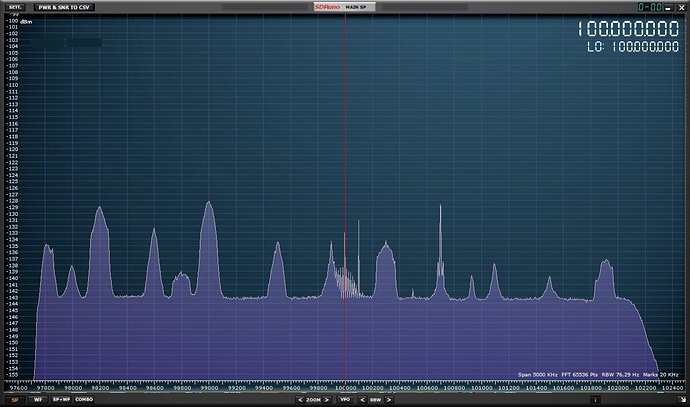Hi,
@ Stef : very nice and clever heatsink case design !
I’ve bought a 3mm thermal pad to attach a heatsink and get a noiseless cooling system.
(see GitHub - gasparka/spectrogram: 80MHz bandwidth with LimeSDR-Mini and GQRX)
However I never use my pad since my lime mini is always working properly even if it gets quite hot.
(limesuite shows about 54C for the lms chip)
Now I can’t do anything with all my shielding covers except using a small fan or remove them !
Here are some measurements with my modded lime-mini. Unfortunately I have no measurement before modding and don’t have a S.A.
I try using similars measurements settings as Stef posts
I use a RSP1A Sdrplay SDR (with SDRUno software) to perform RF levels measurements.
This device is known to give quite good accurate power levels values. (+/-1dBm)
Nothing is connected to RSP1A input port :
(settings are : ZIF mode, max lna gain, SR=span=5MHz, no decimation, FFT on 8192pts with 64 averaging windowing=sin^3 ) :
Spectrum is flat, the display average noise level shows less than -143dBm.
A 1m RG316 coax cable is connecting the RSP1A to the lime-mini RX port to check any RF leaks.
The lime is not already connected to usb3 port :
The lime TX port is terminated by a 50ohm load.
Spectrum shows many fm broadcasting stations ! (coax shielding is not perfect…)
Strongest fm signal is at -131dBm level.
Lime-mini is now plugged into the computer usb3 port with a 1m usb3 cable (with ferrites) :
A 100Mhz (-136dBm) spike appears on spectrum.
Limesuite is now running with theses settings :
Initialization with Connected, Reset and Default buttons
CLKGEN Tab : 20MHz to get 20/4=5 MHz rx sample rate
Zoom on spectrum shows now 2 spikes : the first spike is in fact at 99996kHz and the second and new one is at 100000kHz (-122dBm)
After a few seconds the first spike disappears.(it shows again if there are some commands sent from the computer to the limemini)
Now when setting RX frequency tab :
SXR Tab : frequency 100.1MHz Calculate Tune (this value will help to identificate LO spike)
Spectrum shows 100.1Mhz -131dBm wave (LO leaks to RX port)
Calibrations tab : calibrate RX
100.1MHz wave amplitude decreases and increases to same initial level.
- FFT Viewer is now running (5MHz sample rate, SXR=100.1MHz)
(Default limesuite gains settings are : LNA = Gmax, TIA=Gmax-3, PGA=6dB)
FFT viewer windows shows spikes (about 10dB over the noise floor except the center spike)
if we set SXR clock closed to 100MHz :
Comb signal reappear…
At 100.050MHz :
At 100.010MHz :
At 100.000MHz :
RX port is connected to a reference signal generator (100.2Hz -114dBm) :
Comb spurs levels highly depend on gain settings
with default gain settings LNA=Gmax, TIA=Gmax-3, PGA=6dB
Ref. signal (100.2Hz -114dBm) is among spurs spikes.
with these settings LNA=Gmax-15, TIA=Gmax-0, PGA=19dB :
Spurs are greatly reduced but we keep the ref. signal.
It seems that spurs levels highly depend on LNA Gain.
Let’s see the RF spectrum at lime-mini RX port :
A comb signal appears around 100MHz and the level stay under -135dBm
The 100.1MHz LO spike is the strongest (-130dBm)
The 100Mhz spike is a few dB lower.
I remembered interferences and comb signals were so strong that no other signals can be observed before the mod.
Some spectrums at multiples of 100MHz frequency :
(FFT is still running)
Connecting lime-mini TX port to SDR input :
Interferences at Tx port are similar to RX port ones.
I think theses results are far better than before modding.
You can measure on your unmodded lime mini to compare.
I think most of the improvements come from increasing C17 C18 (for the RX part) Shielding also improve interferences level. Even with 3 metal covers there is still interferences around it. Maybe I have to add a global metal enclosure around the device …
